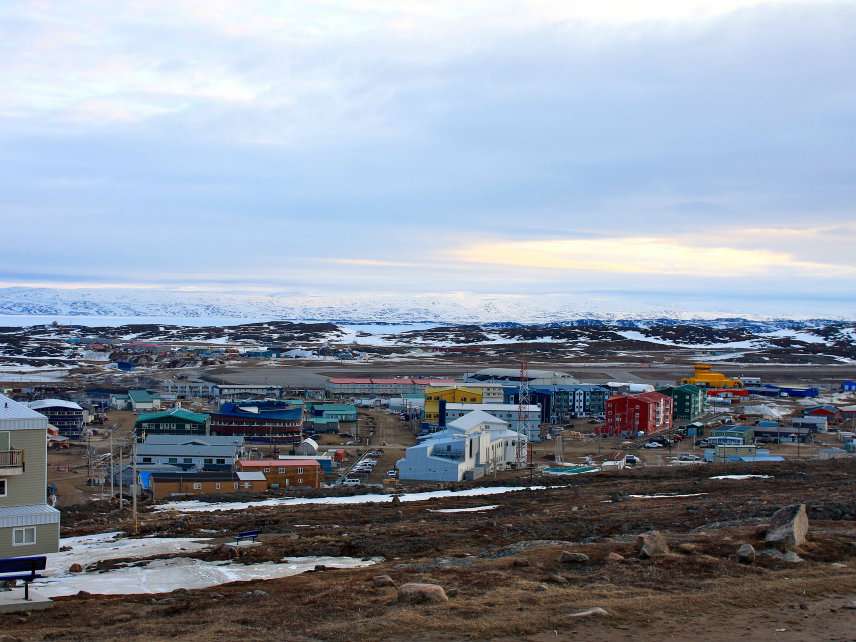Amazon Prime vs. Government: The Private Sector Does It Better
Many residents of northern Canada have access to cheaper goods through Amazon Prime rather than stores selling state-subsidized products.

In the U.S., Amazon Prime is just another convenience of modern life. But for many residents of Nunavut, Canada's northernmost territory, it's a lifesaver.
Nunavut is roughly the size of Western Europe, yet it has a population of only 37,462. Iqaluit, the territory's capital and largest city, has just 7,740 residents. Nunavut isn't connected to the nation's highway system, so fresh food must be flown in daily at a very high cost. Ships can move larger amounts of freight to the region, but only during the warmest months of the year, when ice does not block ports.
Prices in local stores reflect this reality. A liter of Coke can cost CA$10, equivalent to $7.90 in the U.S. A pack of diapers can cost CA$70. But those willing to pay CA$80 a year for an Amazon Prime membership can find items for far cheaper than they would in local stores. That same pack of diapers, for instance, can be found at around half price. Some of Nunavut's smaller settlements are no longer eligible for Prime's free shipping because their remoteness makes shipping there unprofitable, but in larger settlements, such as Iqaluit, Prime is a welcome alternative to the highly expensive goods found in local shops.
The Canadian government has for decades tried to mitigate high prices through subsidy schemes that cover "nutritious food" and basic necessities. The first scheme, called the Food Mail Program, subsidized Canada Post's shipping operations in northern regions. This was replaced a few years ago with Nutrition North, a program that directly funded certain retailers. Both programs have been criticized for their cost and inefficiency, yet many worry that without the subsidies, prices would be even more exorbitant.
The region's unaffordability rests on decades of discriminatory policies and government regulations. The native Inuit people used to live a nomadic, subsistence lifestyle that was well-suited to the harsh environment. Since agricultural development wasn't possible, mobility was key to finding food.
Over 60 years ago, the Royal Canadian Mounted Police (RCMP) began to kill off thousands of Inuit sled dogs under the guise of animal control, claiming that many of the dogs were diseased or dangerous. In 2010, an Inuit-led truth commission, while critical of the RCMP's actions, stopped short of saying that this was a deliberate effort to "urbanize" the Inuit by taking away their main mode of transportation. But that, nonetheless, was the effect.
No longer able to maintain their nomadic lifestyles, those who lost their dogs became "dependent on welfare and store-bought food," according to the commission report. In places like Iqaluit, many residents feel a constant tension between the desires to preserve tradition and to forge a modern Inuit identity. Many of them did not ask to live in these planned communities, but now they must find a way to make it work.
One way to make it work was the sealskin industry. Hunting seals has long been part of the Inuit way of life, but it took on renewed importance in the wake of the forced urbanization. The money made from sealskin helped offset the high cost of living in Nunavut and gave people the opportunity to continue their hunting traditions.
Unfortunately, this economic boon was short-lived. Environmental activists successfully lobbied the U.S. and Europe to ban the sealskin trade, using disturbing imagery of hunting practices to rally the public behind their efforts. Some exemptions were enacted for the Inuit, but the bans decimated the industry. Unemployment, poverty, hunger, and high rates of suicide are now the norm in Nunavut.
Perhaps this is why many residents are skeptical that Amazon Prime's free shipping will last forever. It just seems too good to be true.
With all that's happened to indigenous communities in Canada and around the world, such pessimism is understandable. Government food subsidies have never worked well in Nunavut and other northern communities because they fail to tackle the core problem facing many residents: You can subsidize food and other necessities all you want, but if you take away all the opportunities for people to make a living, even the most heavily subsidized goods will still be too expensive.
Nevertheless, there is good reason for optimism. With the current pace of technological development, moving goods from point A to point B is only going to get easier and cheaper as time goes on. A hundred years ago, no one could have imagined being able to travel halfway around the world in under a day. A decade ago, no one could have imagined being able to order something online and have it show up a few hours later. The prospect of widespread implementation of drone delivery, led by companies like Amazon, could mean that even the most remote places will have cheap, reliable links to the rest of the world. That would do more for Nunavut than any of Ottawa's programs ever have.

Show Comments (31)